MaryAnn Bernal's Blog, page 258
July 15, 2014
History Trivia - Rosetta Stone discovered
July 15
[image error]
971 Saint Swithin, the Bishop of Winchester, was reburied inside his cathedral. The day is celebrated in England as Saint Swithin's Day.
[image error]
1099 Jerusalem was captured by soldiers of the First Crusade, having been held by Islamic rulers since 655.
[image error]
1149 The reconstructed Church of the Holy Sepulchre was consecrated in Jerusalem.
[image error]
1207 King John of England expelled Canterbury monks for supporting Archbishop Stephen Langton.
[image error]
1381 John Ball, a leader in the Peasants' Revolt, was hanged, drawn and quartered in the presence of King Richard II of England.
[image error]
1799 The Rosetta Stone, the key to the translation of hieroglyphs, was discovered in Egypt by a French soldier.

[image error]
971 Saint Swithin, the Bishop of Winchester, was reburied inside his cathedral. The day is celebrated in England as Saint Swithin's Day.
[image error]
1099 Jerusalem was captured by soldiers of the First Crusade, having been held by Islamic rulers since 655.
[image error]
1149 The reconstructed Church of the Holy Sepulchre was consecrated in Jerusalem.
[image error]
1207 King John of England expelled Canterbury monks for supporting Archbishop Stephen Langton.
[image error]
1381 John Ball, a leader in the Peasants' Revolt, was hanged, drawn and quartered in the presence of King Richard II of England.
[image error]
1799 The Rosetta Stone, the key to the translation of hieroglyphs, was discovered in Egypt by a French soldier.

Published on July 15, 2014 04:51
July 14, 2014
Coleccion Del Vidrio y Cristal De Malaga
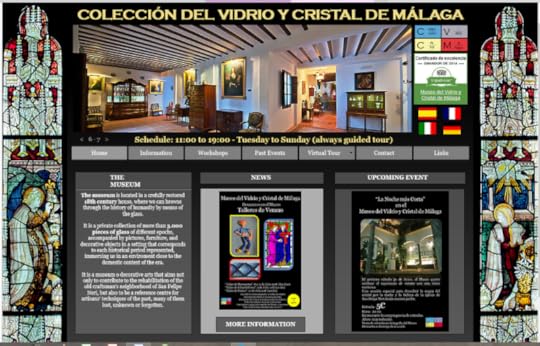 The museum is located in a crefully restored 18th century house, where we can browse through the history of humanity by means of the glass.
The museum is located in a crefully restored 18th century house, where we can browse through the history of humanity by means of the glass.It is a private collection of more than 3.000 pieces of glass of different epochs, accompanied by pictures, furniture, and decorative objects in a setting that corresponds to each historical period represented, immersing us in an enviroment close to the domestic context of the era.
It is a museum o decorative arts that aims not only to contribute to the rehabilitation of the old craftsman's neighborhood of San Felipe Neri, but also to be a reference centre for artisans' techniques of the past, many of them lost, unknown or forgotten
Location:
Plazuela Santísimo Cristo de la Sangre 2, Málaga 29012, in front of the main door of the Church of San Felipe Neri. (Note that the address has recently been changed from Calle Gaona, 20).
Tlf: (+34) 95 222 02 71
e-mail: museovidriomalaga@gmail.com
Admission:
* General: 5€
* Reduced: 3€
- Those over 65 years of age
- Children from 7 to 12 years
- Groups of 10 or more.
* Free for:
- Children of 6 years and under
- Members of ICOM
- Accredited journalists.
- Friends of the Museum
http://www.museovidrioycristalmalaga.com/museoingles/information.html

Published on July 14, 2014 08:39
Skeletons of war dead from 11,000 BC go on show at the British Museum
The remains, displaying breaks and slash marks of violent death, were found in a cemetery on the banks of the Nile river
Maev Kennedy
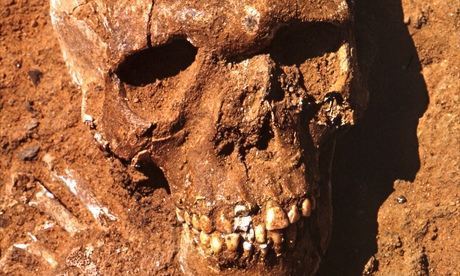
13,000 year old skeletons of individuals who died in violent battle in early Egypt are being shown for the first time, at the British Museum. Photograph: GuardianLying on their sides, curled together, the two skeletons on display for the first time at the British Museum look peacefully laid to rest. But the razor-sharp stone flakes scattered around and among the bones are the remains of ancient weapons, with a myriad breaks and slash marks on the skeletons. The two are among the oldest war dead in the world, men who died a brutal death after violent lives 13,000 years ago.
The cemetery they came from, on the banks of the Nile in what is now northern Sudan, is famous among archaeologists: dating from about 11,000 BC, it is among the oldest organised burial grounds in the world. However, the finds, including the shattered bones of scores of men, women and children and the remains of the weapons that killed them, have never been exhibited before.
"I suspect there was no outside enemy, these were tribes mounting regular and ferocious raids amongst themselves for scarce resources," curator Renee Friedman said. "Nobody was spared: there were many women and children among the dead, a very unusual composition for any cemetery, and almost half bore the marks of violent death. Many more may have died of flesh wounds which left no marks."
"Many had the marks of earlier injuries which had healed: these people lived in extraordinarily violent times."
They were buried very carefully. All the bodies were laid on their sides, heads to the south and looking east – towards the source of the river and the rising sun, the two elements on which survival depended.
"Before this date we find isolated burials of bodies just placed in holes in the ground," Friedman said. "These come from a time when the hunter gatherers are starting to put down roots, and burying their ancestors is a very powerful way of laying claim to the land. But clearly they had to defend it, not once but many times, at terrible cost."
The cemetery at Jebel Sahaba now lies deep under the waters of the Aswan dam. They were excavated in the 1960s by the American archaeologist Professor Fred Wendorf, in one of the Unesco-funded rescue digs when archaeologists from all over the world came to Egypt to save as much history as possible before the waters rose.
The most famous of the projects was the dismantling of the twin temple complex of Abu Simbel, which was reconstructed on higher ground. However, so much material was excavated that research has continued on the finds from other sites for the past half century.
The site excavated by Wendorf was part of early Egypt, and startlingly different from today's familiar landscape of parched baking desert and lush fertile river valley. The people – heavy boned and strong jawed, unlike the slighter later people of Ancient Egypt – were among the first human inhabitants after the ice age, but the weather is believed to have been cold and dry, with little fertile land. Some climate historians believe the water level of the Nile was also rising, compressing the habitable land even further.
Wendorf recovered the remains of 61 individuals, and of the weapons that killed them. When he retired from the Southern Methodist University of Texas in 2001 he presented his collection, including research notes, photographs and site drawings, to the British Museum. The collection has been visited by scholars from all over the world, but has never been seen by the public, until the redisplay of the Early Egyptian gallery allowed some of the most extraordinary pieces, including two of the skeletons, to come out of the stores.
The stone flakes of the weapons, originally lashed into wooden handles which have decayed, look primitive, but they were murderous: Wendorf found hundreds, but scans at the British Museum have revealed many more including some which penetrated and lodged inside the skulls. An arm bone also on display shows a healed fracture, a classic defensive injury from arms raised to ward off a savage blow.
"Often with remains from such an ancient time, we will never know what happened to them," Friedman said. "With these skeletons there is no question: we found arrow heads lodged in spines, spear points that had pierced eye sockets, and many that clearly died under a hail of arrows. The lives and deaths of these people were not nice."
http://www.theguardian.com/science/2014/jul/14/13000-year-old-skeletons-war-dead-british-museum
Maev Kennedy

13,000 year old skeletons of individuals who died in violent battle in early Egypt are being shown for the first time, at the British Museum. Photograph: GuardianLying on their sides, curled together, the two skeletons on display for the first time at the British Museum look peacefully laid to rest. But the razor-sharp stone flakes scattered around and among the bones are the remains of ancient weapons, with a myriad breaks and slash marks on the skeletons. The two are among the oldest war dead in the world, men who died a brutal death after violent lives 13,000 years ago.
The cemetery they came from, on the banks of the Nile in what is now northern Sudan, is famous among archaeologists: dating from about 11,000 BC, it is among the oldest organised burial grounds in the world. However, the finds, including the shattered bones of scores of men, women and children and the remains of the weapons that killed them, have never been exhibited before.
"I suspect there was no outside enemy, these were tribes mounting regular and ferocious raids amongst themselves for scarce resources," curator Renee Friedman said. "Nobody was spared: there were many women and children among the dead, a very unusual composition for any cemetery, and almost half bore the marks of violent death. Many more may have died of flesh wounds which left no marks."
"Many had the marks of earlier injuries which had healed: these people lived in extraordinarily violent times."
They were buried very carefully. All the bodies were laid on their sides, heads to the south and looking east – towards the source of the river and the rising sun, the two elements on which survival depended.
"Before this date we find isolated burials of bodies just placed in holes in the ground," Friedman said. "These come from a time when the hunter gatherers are starting to put down roots, and burying their ancestors is a very powerful way of laying claim to the land. But clearly they had to defend it, not once but many times, at terrible cost."
The cemetery at Jebel Sahaba now lies deep under the waters of the Aswan dam. They were excavated in the 1960s by the American archaeologist Professor Fred Wendorf, in one of the Unesco-funded rescue digs when archaeologists from all over the world came to Egypt to save as much history as possible before the waters rose.
The most famous of the projects was the dismantling of the twin temple complex of Abu Simbel, which was reconstructed on higher ground. However, so much material was excavated that research has continued on the finds from other sites for the past half century.
The site excavated by Wendorf was part of early Egypt, and startlingly different from today's familiar landscape of parched baking desert and lush fertile river valley. The people – heavy boned and strong jawed, unlike the slighter later people of Ancient Egypt – were among the first human inhabitants after the ice age, but the weather is believed to have been cold and dry, with little fertile land. Some climate historians believe the water level of the Nile was also rising, compressing the habitable land even further.
Wendorf recovered the remains of 61 individuals, and of the weapons that killed them. When he retired from the Southern Methodist University of Texas in 2001 he presented his collection, including research notes, photographs and site drawings, to the British Museum. The collection has been visited by scholars from all over the world, but has never been seen by the public, until the redisplay of the Early Egyptian gallery allowed some of the most extraordinary pieces, including two of the skeletons, to come out of the stores.
The stone flakes of the weapons, originally lashed into wooden handles which have decayed, look primitive, but they were murderous: Wendorf found hundreds, but scans at the British Museum have revealed many more including some which penetrated and lodged inside the skulls. An arm bone also on display shows a healed fracture, a classic defensive injury from arms raised to ward off a savage blow.
"Often with remains from such an ancient time, we will never know what happened to them," Friedman said. "With these skeletons there is no question: we found arrow heads lodged in spines, spear points that had pierced eye sockets, and many that clearly died under a hail of arrows. The lives and deaths of these people were not nice."
http://www.theguardian.com/science/2014/jul/14/13000-year-old-skeletons-war-dead-british-museum

Published on July 14, 2014 08:26
History Trivia - Bastille Day
July 14
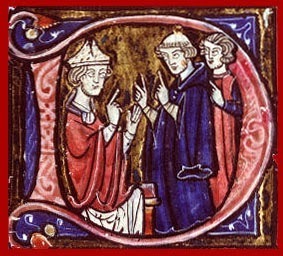
664 Deusdedit of Canterbury, the first native-born holder of the see of Canterbury died. An Anglo-Saxon, he became archbishop in 655 and held the office until his death, probably from the plague.
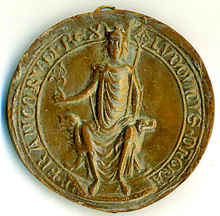
1223 Louis VIII became King of France upon the death of his father, Philip II of France.
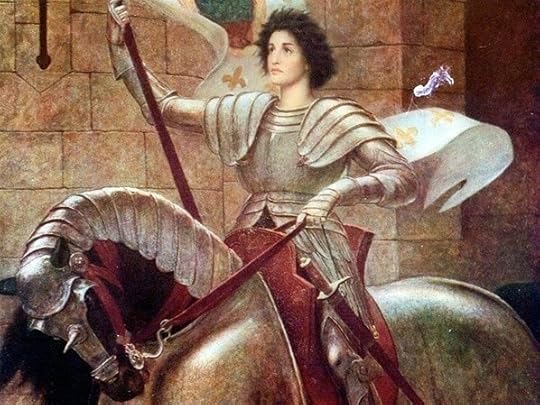
1430 Joan of Arc, taken prisoner by the Burgundians in May, was handed over to Pierre Cauchon, the bishop of Beauvais.
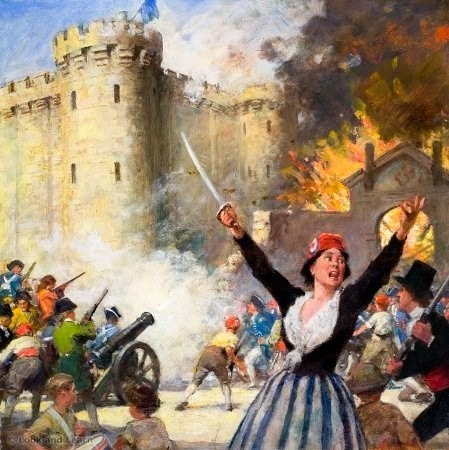
1789 The Bastille, a fortress in Paris used to hold political prisoners, was stormed by a mob, beginning of the French Revolution.


664 Deusdedit of Canterbury, the first native-born holder of the see of Canterbury died. An Anglo-Saxon, he became archbishop in 655 and held the office until his death, probably from the plague.

1223 Louis VIII became King of France upon the death of his father, Philip II of France.

1430 Joan of Arc, taken prisoner by the Burgundians in May, was handed over to Pierre Cauchon, the bishop of Beauvais.

1789 The Bastille, a fortress in Paris used to hold political prisoners, was stormed by a mob, beginning of the French Revolution.

Published on July 14, 2014 05:26
July 13, 2014
In the Midst: #History On this day, July 13th, in 1861,
In the Midst: #History On this day, July 13th, in 1861,: the American Civil War has been ongoing for 3 months and 1 day. Lives have been turned upside down and twisted inside out with fear and w...
#History On this day, July 13th, in 1861,

the American Civil War has been ongoing for 3 months and 1 day. Lives have been turned upside down and twisted inside out with fear and worry. Both sides thought the war was going to be short lived, yet, both sides were wrong.
Northerners have referred to the Civil War as the War to Preserve the Union, the War of the Rebellion (War of the Southern Rebellion) and the War to Make Men Free.
Southerners have referred to the Civil War as the War Between the States or the War of Northern Aggression.
An estimate of 1.5 million troops joined the Union side of the war.
An estimate of 1.2 million troops joined the Southern side of the war.
With records being lost, damaged, or not recorded, it is an estimated 600,000 men who were either killed in action of died of disease.
It is estimated that 1.2 million were wounded and survived.
Confederate Heroes' Day commemorate those who died fighting for the Confederate States of America during the American Civil War. An official state holiday in Texas has fallen annually on January 19 - the birthday of Robert E Lee - and has been celebrated since its approval on January 30, 1931.
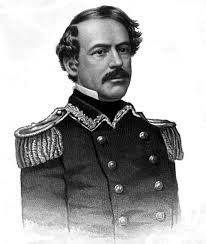 Robert E. Lee
Robert E. Lee
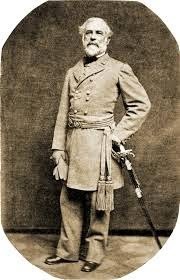 Robert E. Lee
Robert E. Lee
About Journey to Freedom.
My first novel written was set prior to the civil war and traveled through the civil war time period. I wanted to write about interracial relationships, slavery, and the personal challenges that people in that time period faced. This book centers on freedom from different bonds: physical, mental, and emotional. In this book, the characters form bonds, experience the underground railroad, unexpected heroes and heroines, and the different aspects of the Civil War including warship battle and medicinal challenges.
Greggory, aka Black Arrow, is half-Indian and half Negro. Marrissa is half-white and half Negro.
Robert is Negro. Daniel is white. In a journey that brings them all together, they learn trust, love, and have a reborn faith in people. Until the War tears them apart once again.
These are the main characters in the plot of Journey to Freedom. If you find this interesting, it would be my great honor if you check out my book on Amazon.
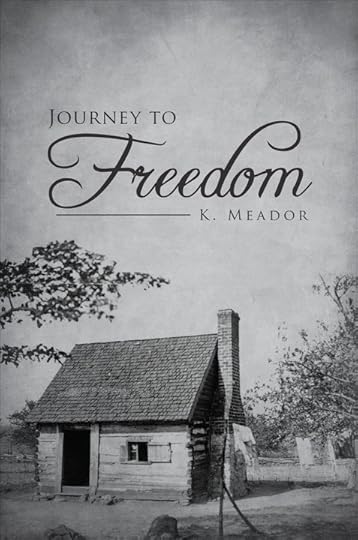 Amazon Link
Amazon Link

#History On this day, July 13th, in 1861,

the American Civil War has been ongoing for 3 months and 1 day. Lives have been turned upside down and twisted inside out with fear and worry. Both sides thought the war was going to be short lived, yet, both sides were wrong.
Northerners have referred to the Civil War as the War to Preserve the Union, the War of the Rebellion (War of the Southern Rebellion) and the War to Make Men Free.
Southerners have referred to the Civil War as the War Between the States or the War of Northern Aggression.
An estimate of 1.5 million troops joined the Union side of the war.
An estimate of 1.2 million troops joined the Southern side of the war.
With records being lost, damaged, or not recorded, it is an estimated 600,000 men who were either killed in action of died of disease.
It is estimated that 1.2 million were wounded and survived.
Confederate Heroes' Day commemorate those who died fighting for the Confederate States of America during the American Civil War. An official state holiday in Texas has fallen annually on January 19 - the birthday of Robert E Lee - and has been celebrated since its approval on January 30, 1931.
 Robert E. Lee
Robert E. Lee
 Robert E. Lee
Robert E. Lee About Journey to Freedom.
My first novel written was set prior to the civil war and traveled through the civil war time period. I wanted to write about interracial relationships, slavery, and the personal challenges that people in that time period faced. This book centers on freedom from different bonds: physical, mental, and emotional. In this book, the characters form bonds, experience the underground railroad, unexpected heroes and heroines, and the different aspects of the Civil War including warship battle and medicinal challenges.
Greggory, aka Black Arrow, is half-Indian and half Negro. Marrissa is half-white and half Negro.
Robert is Negro. Daniel is white. In a journey that brings them all together, they learn trust, love, and have a reborn faith in people. Until the War tears them apart once again.
These are the main characters in the plot of Journey to Freedom. If you find this interesting, it would be my great honor if you check out my book on Amazon.
 Amazon Link
Amazon Link

Published on July 13, 2014 13:54
Ancient Coins Found Buried in British Cave
By Kelly Dickerson
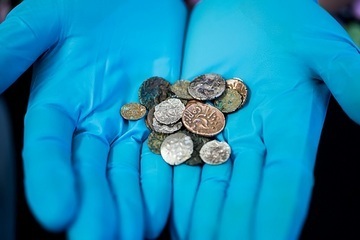
 An excavation at Reynard's Kitchen Cave in the UK unearthed 26 coins from the Iron Age and Roman period.
An excavation at Reynard's Kitchen Cave in the UK unearthed 26 coins from the Iron Age and Roman period.
Credit: Richard Davenport Photography
Digging through a cave in central Britain, archaeologists uncovered 26 ancient gold and silver coins belonging to the Corieltauvi tribe, a group of people that lived in Britain before the Roman conquest.
Archaeologists previously found collections of coins like these in other parts of Britain, but this is the first time they have ever been discovered buried in a cave. The discovery of the coins was a surprise, because they were found at a site called Reynard's Kitchen Cave, which is located outside the Corieltauvi's usual turf.
"It might be that we have a member of the tribe living beyond the boundary that is more usually associated with the territory," Rachael Hall, an archaeologist at the National Trust who led the excavation, told Live Science in an email
Back in 2000, a group of almost 5,000 Corieltauvi coins were discovered in Leicestershire. This more recent find at Reynard's Kitchen Cave might be additional evidence that members of the tribe once hoarded coins. Hall and the team speculate that the coins were hidden to ensure they weren't stolen, and whoever buried them may have planned on returning to the site to dig the coins up again.
The discovery included 20 Iron Age coins, three Roman coins and three coins from much later eras, according to a treasury report prepared by Ian Leins, curator of Iron Age and Roman coins at the British Museum. While the coins are not all from the same time period, Hall and the team of archaeologists said it's common to find collections of coins from different times, in the same way that, for example, U.S. coins from earlier decades are still circulating among newer coins.
Archaeologists are still unsure how Iron Age coins were used, but it is unlikely they were used as money to purchase items. They were more likely used as a means for storing wealth, given as gifts or offered as sacrifice. The three Roman coins discovered predate the Roman invasion, so archaeologists believe the coins may have been given as gifts.
A climber seeking shelter in the cave first discovered four of the coins, which prompted a full-scale excavation by the National Trust and Operation Nightingale, a group that helps injured military members recuperate by having them perform field archaeology.
The monetary value today of the coins discovered is around two thousand pounds (about $3,400 USD). The collection of coins officially qualifies as "treasure" under the United Kingdom's 1996 Treasure Act, which means it is valuable enough that it needs to be reported to authorities and offered up to museums.
Earlier excavation of Reynard's Kitchen Cave revealed animal bones and pieces of pottery. The coins will be put on display later this year at the Buxton Museum in Derbyshire.
http://www.livescience.com/46693-ancient-cave-coins-discovered.html

 An excavation at Reynard's Kitchen Cave in the UK unearthed 26 coins from the Iron Age and Roman period.
An excavation at Reynard's Kitchen Cave in the UK unearthed 26 coins from the Iron Age and Roman period.Credit: Richard Davenport Photography
Digging through a cave in central Britain, archaeologists uncovered 26 ancient gold and silver coins belonging to the Corieltauvi tribe, a group of people that lived in Britain before the Roman conquest.
Archaeologists previously found collections of coins like these in other parts of Britain, but this is the first time they have ever been discovered buried in a cave. The discovery of the coins was a surprise, because they were found at a site called Reynard's Kitchen Cave, which is located outside the Corieltauvi's usual turf.
"It might be that we have a member of the tribe living beyond the boundary that is more usually associated with the territory," Rachael Hall, an archaeologist at the National Trust who led the excavation, told Live Science in an email
Back in 2000, a group of almost 5,000 Corieltauvi coins were discovered in Leicestershire. This more recent find at Reynard's Kitchen Cave might be additional evidence that members of the tribe once hoarded coins. Hall and the team speculate that the coins were hidden to ensure they weren't stolen, and whoever buried them may have planned on returning to the site to dig the coins up again.
The discovery included 20 Iron Age coins, three Roman coins and three coins from much later eras, according to a treasury report prepared by Ian Leins, curator of Iron Age and Roman coins at the British Museum. While the coins are not all from the same time period, Hall and the team of archaeologists said it's common to find collections of coins from different times, in the same way that, for example, U.S. coins from earlier decades are still circulating among newer coins.
Archaeologists are still unsure how Iron Age coins were used, but it is unlikely they were used as money to purchase items. They were more likely used as a means for storing wealth, given as gifts or offered as sacrifice. The three Roman coins discovered predate the Roman invasion, so archaeologists believe the coins may have been given as gifts.
A climber seeking shelter in the cave first discovered four of the coins, which prompted a full-scale excavation by the National Trust and Operation Nightingale, a group that helps injured military members recuperate by having them perform field archaeology.
The monetary value today of the coins discovered is around two thousand pounds (about $3,400 USD). The collection of coins officially qualifies as "treasure" under the United Kingdom's 1996 Treasure Act, which means it is valuable enough that it needs to be reported to authorities and offered up to museums.
Earlier excavation of Reynard's Kitchen Cave revealed animal bones and pieces of pottery. The coins will be put on display later this year at the Buxton Museum in Derbyshire.
http://www.livescience.com/46693-ancient-cave-coins-discovered.html

Published on July 13, 2014 07:57
Ancient Synagogue Mosaic Depicts Bloody Jewish Legend
By Kelly Dickerson
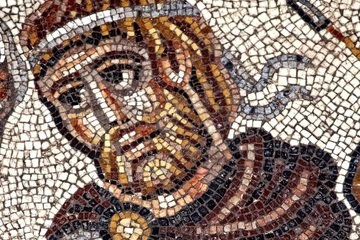
 The new mosaic discovered in an ancient synagogue in Israel depicts a story from Jewish legend. Alexander is one of the characters from the legend.
The new mosaic discovered in an ancient synagogue in Israel depicts a story from Jewish legend. Alexander is one of the characters from the legend.
Credit: UNC
A gruesome and bloody battle scene once decorated the floors of a 5th century synagogue in a Jewish village in northern Israel.
The mosaic is divided into three horizontal panels and measures about 10 feet (3 meters) by 6.5 feet (2 meters). The lowest section shows a dying soldier carrying a shield, and a bull stuck by several spears, with blood oozing out of the wounds. The gory scene found glittering on the synagogue's tiles surprised the dig team.
"This is the first time that a non-biblical story has been found decorating an ancient synagogue," Jodi Magness, excavation leader from the University of North Carolina, Chapel Hill, told Live Science in an email.
The middle panel of the mosaic depicts a seated old man holding a scroll, surrounded by younger men. Arches frame the whole scene, each one crowned with glowing oil lamps. The top panel shows a man leading a bull by its horns, and a group of soldiers and elephants clad in armor. The elephants were the first clue that the story depicted in the mosaic was not a biblical one, the researchers said.
"Battle elephants were associated with Greek armies beginning with Alexander the Great, so this might be a depiction of a Jewish legend about the meeting between Alexander and the Jewish high priest," Magness said in a statement. "Different versions of this story appear in the writings of Flavius Josephus and in rabbinic literature."
The first excavation of the site, in 2012, unearthed a mosaic depicting the biblical character Samson, shown with foxes. The scene reflects the Bible story in the book Judges, where Samson ties torches to the tails of foxes to burn the Philistine's crops.
During the next summer, Magness discovered a second mosaic that depicts another story about Samson. The scene comes from a story (also in the book of Judges) in which the biblical hero pulls the gate of Gaza out of the wall, shoulders it and carries it up a hill.
Magness and the team said they hope the excavation of the synagogue will reveal more about the relationship between ancient Christians and Jews. In the 2nd and 3rd centuries, the Roman rulers in Israel were pagans, and likely would have allowed Jews to build large synagogues. But in the 5th century, when Christians seized power, Jews likely did not enjoy the same level of tolerance, historians and archaeologists believe. However, Magness thinks the synagogue she discovered dates back to this oppressive era. If it's confirmed, the discovery could change what some scientists believe about the relationship between ancient Christians and Jews.
The dig team removed all three mosaics from the site for preservation. Excavation of the synagogue will continue next summer.
http://www.livescience.com/46771-ancient-synagogue-mosaic-battle-scene.html


 The new mosaic discovered in an ancient synagogue in Israel depicts a story from Jewish legend. Alexander is one of the characters from the legend.
The new mosaic discovered in an ancient synagogue in Israel depicts a story from Jewish legend. Alexander is one of the characters from the legend. Credit: UNC
A gruesome and bloody battle scene once decorated the floors of a 5th century synagogue in a Jewish village in northern Israel.
The mosaic is divided into three horizontal panels and measures about 10 feet (3 meters) by 6.5 feet (2 meters). The lowest section shows a dying soldier carrying a shield, and a bull stuck by several spears, with blood oozing out of the wounds. The gory scene found glittering on the synagogue's tiles surprised the dig team.
"This is the first time that a non-biblical story has been found decorating an ancient synagogue," Jodi Magness, excavation leader from the University of North Carolina, Chapel Hill, told Live Science in an email.
The middle panel of the mosaic depicts a seated old man holding a scroll, surrounded by younger men. Arches frame the whole scene, each one crowned with glowing oil lamps. The top panel shows a man leading a bull by its horns, and a group of soldiers and elephants clad in armor. The elephants were the first clue that the story depicted in the mosaic was not a biblical one, the researchers said.
"Battle elephants were associated with Greek armies beginning with Alexander the Great, so this might be a depiction of a Jewish legend about the meeting between Alexander and the Jewish high priest," Magness said in a statement. "Different versions of this story appear in the writings of Flavius Josephus and in rabbinic literature."
The first excavation of the site, in 2012, unearthed a mosaic depicting the biblical character Samson, shown with foxes. The scene reflects the Bible story in the book Judges, where Samson ties torches to the tails of foxes to burn the Philistine's crops.
During the next summer, Magness discovered a second mosaic that depicts another story about Samson. The scene comes from a story (also in the book of Judges) in which the biblical hero pulls the gate of Gaza out of the wall, shoulders it and carries it up a hill.
Magness and the team said they hope the excavation of the synagogue will reveal more about the relationship between ancient Christians and Jews. In the 2nd and 3rd centuries, the Roman rulers in Israel were pagans, and likely would have allowed Jews to build large synagogues. But in the 5th century, when Christians seized power, Jews likely did not enjoy the same level of tolerance, historians and archaeologists believe. However, Magness thinks the synagogue she discovered dates back to this oppressive era. If it's confirmed, the discovery could change what some scientists believe about the relationship between ancient Christians and Jews.
The dig team removed all three mosaics from the site for preservation. Excavation of the synagogue will continue next summer.
http://www.livescience.com/46771-ancient-synagogue-mosaic-battle-scene.html

Published on July 13, 2014 07:52
Researchers explore cursed 450-year-old shipwreck at the bottom of the Baltic Sea
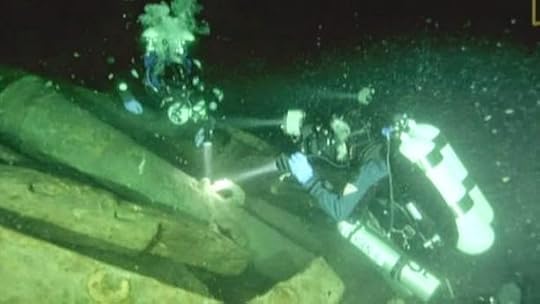
Researchers have begun exploring the wreckage of the Mars, a Swedish war ship that sank during a naval battle in 1564.
Johan Rönnby, professor of maritime archeology at Södertörn University in Sweden, was recently awarded a grant from the National Geographic Society for his project, "The Maritime Battlefield of Mars (1964)."
Rönnby spoke to FoxNews.com via Skype from nearby the wreck site, which is located 12 nautical miles southeast of the island of Oland in the Baltic Sea.
"It's a unique ship," Rönnby said. "Maybe the biggest in the world during this time. And when it exploded, because it actually exploded during the fight, it went down to the bottom ... so we are diving on the wreck, but we are also diving on the sunken battlefield."
The ship sank during a bloody battle against a fleet from Denmark and the German city of Lübeck. Mars was rumored to have been cursed because many of its 130 cannons were made from melted church bells.
Rönnby says due to the brackish water and conditions of the Baltic Sea, the ship is remarkably well-preserved.
"The cold and darker water of the Baltic Sea preserves wreck in a fantastic way, and that's really the reason we have Mars on the bottom like this," Rönnby said.
http://www.foxnews.com/science/2014/07/11/researchers-explore-cursed-450-year-old-shipwreck-at-bottom-baltic-sea/

Published on July 13, 2014 07:47
History Trivia - Dean of St Paul's Cathedral perfects a way to bottle beer.
July 13

1099 The Crusaders launched their final assault on Jerusalem.
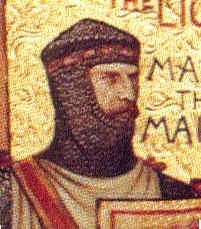
1174 William I of Scotland, a key rebel in the Revolt of 1173–1174, was captured at Alnwick by forces loyal to Henry II of England.

1568 the Dean of St Paul's Cathedral perfected a way to bottle beer.


1099 The Crusaders launched their final assault on Jerusalem.

1174 William I of Scotland, a key rebel in the Revolt of 1173–1174, was captured at Alnwick by forces loyal to Henry II of England.

1568 the Dean of St Paul's Cathedral perfected a way to bottle beer.

Published on July 13, 2014 04:48
July 12, 2014
Bus Pass Holiday by Karenne Griffin (Book 1 of Bus Pass Series) [Kindle Edition]

In May 2014 Karenne Griffin spent five days travelling around Wales using her bus pass. This is the story of the places she visited, the people she met, the fun she had, and how easy it was to get about for free.
Amazon US
http://www.amazon.com/Bus-Pass-Holiday-Book-ebook/dp/B00KP9HVG2/ref=sr_1_1?ie=UTF8&qid=1405179860&sr=8-1&keywords=Bus+pass+Holiday+Karenne+Griffin
Amazon UK
http://www.amazon.co.uk/Bus-Pass-Holiday-Book-ebook/dp/B00KP9HVG2/ref=sr_1_1?ie=UTF8&qid=1405184295&sr=8-1&keywords=Bus+Pass+Holiday

Published on July 12, 2014 09:58



